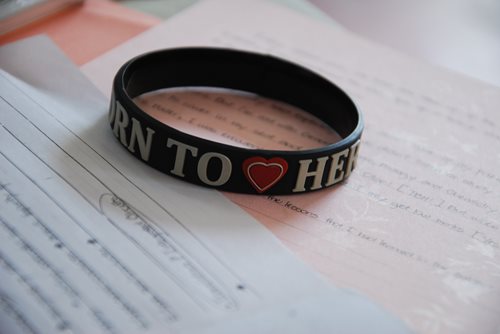Written by Michele Wheat

Everyone has seen colorful silicone bands encircling the wrists of their friends, coworkers, and family members. Silicone wristbands (sometimes referred to as rubber bracelets or gel bracelets) first became popular in the first decade of the 21st century. Lance Armstrong helped the bracelets become a fashion phenomenon: The famous cyclist, a cancer survivor, wore a bright yellow bracelet with "Livestrong" printed on it as a way to signal support for people fighting cancer. Nike supported the movement, and many athletes competing in the 2004 Summer Olympics in Greece wore them during their events.
Soon, people began wearing silicone bracelets in a variety of colors to show their support for different causes or ideals. It's easy to see why they became so popular: They're inexpensive and easy to wear, and when celebrities began wearing them, everyone else wanted to, too. Silicone wristbands are also popular with the people who make and sell them: They're easy to design, come in a variety of colors, and are inexpensive to produce. They also come in a variety of sizes and thicknesses. This flexibility allows business owners, event promoters, and fundraisers to create bracelets that represent their brand well at an affordable price. They've also been used as tickets for music festivals and other events.
Wristbands have been around for a very long time. Rubber ones were very popular in the 1980s, but paper, cord, vinyl, and other wristbands have been used for even longer. Today, silicone is one of the most popular materials for wristbands. It's both nontoxic and hypoallergenic, so it's safe to wear next to the skin. It's waterproof, so you can wear silicone wristbands in the rain or in a swimming pool. And since silicone is stretchy, it's easy to take these bands on and off.
The first step in the process of making silicone wristbands requires a silicone rubber base that is either cut into strips or formed into tubes, depending on the type of wristband being made. Next, the material is placed into a steel mold to be melted and formed into a tube that can be cut into bands. Custom colors for the wristbands are typically mixed in before the molding process, although a second layer of ink can be used after the mold is finished.
Silicone wristbands can come in a variety of styles. Obviously, customers can choose the text, images, and colors used for their wristbands. But how the design is printed onto the wristband also determines the final look. Debossed wristbands have a logo or saying engraved into the silicone. The Livestrong wristbands are an example of this style. Deboss-printed wristbands are made the same way, but then ink in a contrasting color is laid into the engraved design to make it stand out more. Embossed wristbands are the opposite of debossed bands: On an embossed band, the design is raised above the flat surface of the band. With an embossed filled wristband, this raised design is a different color than the rest of the band. And some silicone wristbands are simply imprinted, meaning that the design is inked onto the flat silicone. You also may come across dual-layer wristbands, which have inner and outer layers that are different colors, or figured wristbands, which have a molded area in the center where the design is placed, making it stand out more.